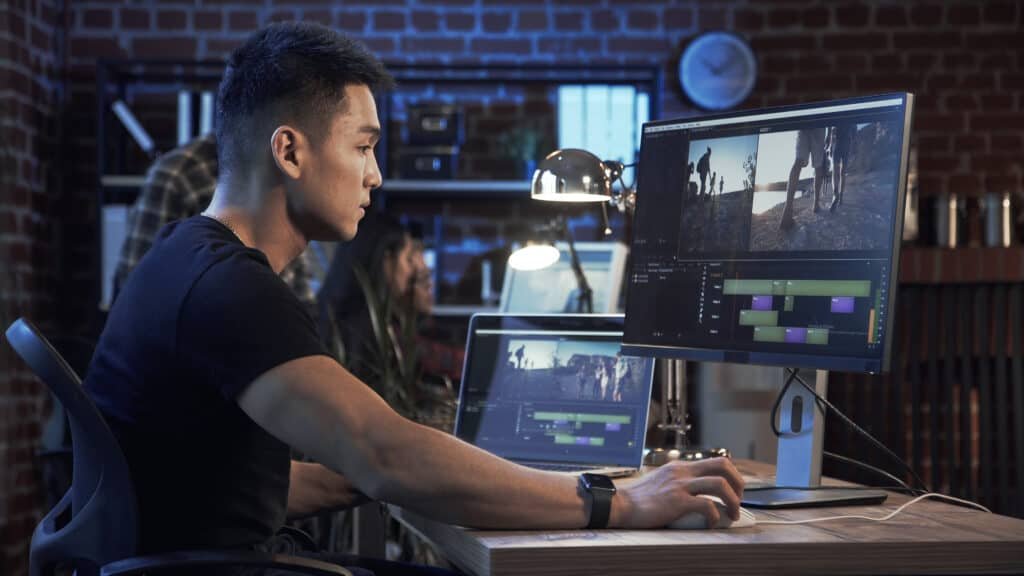
Videos are great for increasing website traffic, making them a healthy part of your SEO strategy. However, video localization can be a lengthy process if you do not know what you are doing. For many video producers, first-time video localization efforts result in wasted time and money that could have been avoided by understanding the key points to address when going into video localization. This article will address video localization and video localization services and how to approach video localization intelligently.
Video Localization: The Good, Bad and Ugly
When video localization is appropriately done, it can be a powerful tool for your marketing strategy. Videos provide an excellent way to convey complex information in an easily understandable video format. However, video localization can be challenging to do correctly, and video translation services often receive the brunt of video localization efforts gone wrong.
Video Post-Production involves video editing, video dubbing/subtitling, and video voice-over. Video post-production is a very lengthy process, and video localization services may struggle to give you a quick turnaround. If video localization is done poorly and video post-production is rushed, the video dubbing/subtitling and voice-over will suffer greatly. This can result in people not taking your video seriously or not understanding what your video is trying to convey.
Beginner’s Guide
Video localization – First Things to Know

Start with the video localization basics: video marketing and video social media promotion. These two crucial areas can get your video seen by a large audience of potential customers. You can track viewer responses and how they interact with your video and thereby qualify their interest in your product/service. Video marketing and video social media promotion should come first. Once you have these well established, then video localization can be used to reach a new, global audience with the click of a button.
There are video translation services for video editing and video dubbing/subtitling. However, there is one video localization service you should avoid: Google Translate.
Video Localization: Tools to Use, Tools to Avoid
When going into video localization, Google Translate should be the first and only tool to avoid. Several video localization tools can help you address some of the difficulties with localizing a video. Video localization tools have come a long way over recent years, though many video localization services will require going back to square one if avoiding Google Translate is not addressed.
Video localization and video translation services: Tools and Tips
Before going into video localization, be sure to address these key points:
- Video subtitles and captions should be the same length as the original audio/video file. Language translation should not be done word by word. Video localization services will require a significant investment of time – consider this from the beginning. Video voice-over is an integral part of video localization. Quality voice-over can be challenging to find and require new recording sessions.
- Video localization projects involve using video editing tools to lock your original English audio track for subtitles (srt), captions (scc) or dubbing (sub/idx).
- Many video editing tools support SRT subtitles. Video localization should be a part of your video editing process – start the project during post-production, so you have control over your original English audio track. The goal is to lock down your English audio for subtitles/capt
- Video editing for professional localization should be done in your video editing software, not online. Online video editing does not allow proper synchronization between the video file and the downloaded subtitle/caption files. There is a 10-second delay between the time an online video file is downloaded and the time it opens to download. This causes synchronization issues between your subtitles/captions and your video.
- Video localization can be challenging to accomplish, but with these necessary tools at the beginning of the process, success will come easier – rather than having to go back to square one if you take shortcuts using Google Translate.
Further Understanding: What to Avoid?
Understanding the history and core concepts of video localization will go a long way in ensuring your success. This is especially true if you’re working with translations and dubbing/subtitles:
Automatic Translation: Bad Idea
If avoiding Google Translate wasn’t enough reason to prevent automatic translation, here are some more reasons why this should be avoided.
Automatic translation takes a significant amount of research to understand the core concepts, history, and current technologies. There are two main types of automatic translation: Machine-Assisted Translation (MAT) and Machine Translation (MT). MAT requires human translators to first hand off their work for automation. MT is an automated process that does not require manual assistance.
The history of automatic translation includes several failed technologies, such as the IBM MT system circa 1980. The current state of automated translation is still in its infancy. Many services perform automated translations (such as Google Translate), but results will be inferior to hiring a professional localization service. Translation Memory (TM), Neural MT, and Machine Learning are the current core technologies involved with automated translation. There is no ‘black box technology that will give you excellent translations without hiring a professional localization service – so don’t be fooled by claims of automatic translation tools.
Machine translation is still dependent on human translators for their work to be automated. MT may help you reduce costs, but this will be especially true if your budget can afford quality localization services.
If you insist on using automatic translation – do so with the understanding that any work done by machine-assisted translators or machine translators has not been verified by a human and will most likely require significant revision.
The Bottom Line

Video localization services can be a complicated process that requires expensive resources and the proper skill set. However, you should have no problem getting started on this arduous journey with these tips at your disposal. Stay away from automatic translation if possible – it will only lead to more work down the road. Keep in mind what has been discussed here about video voice-over and how important it is for professional localization to happen during post-production, so there are fewer mistakes made before encoding begins. If you’re ready now, let us know! Our team of experts is waiting to partner with you and help create a successful localization campaign!
Was this article useful to you?
0 / 5. 0
很抱歉,这篇文章对您没有用!
让我们改善这篇文章!
告诉我们我们如何改善这篇文章?









